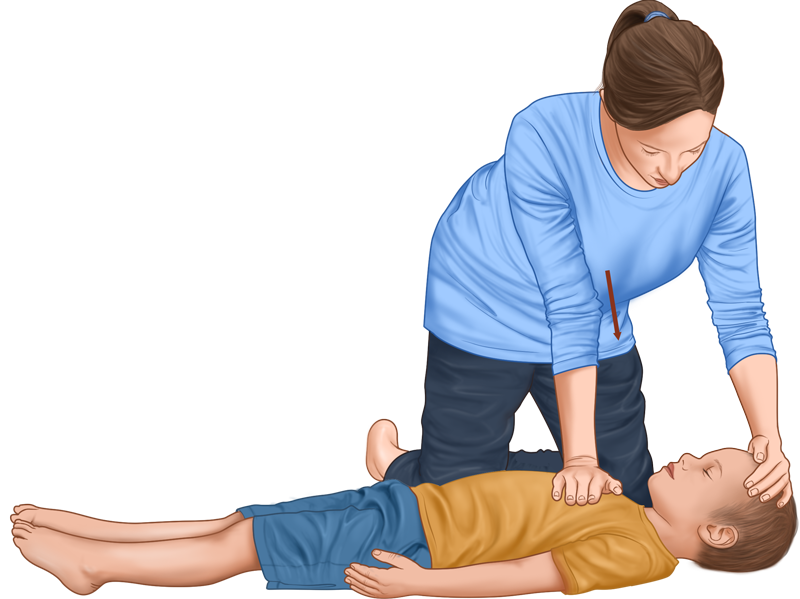To understand the basics of pediatric resuscitation, it’s vital to understand what to do and what to avoid. Here, the “Do’s” include actions like providing CPR and securing the airway properly. On the other hand, the “Don’ts” involve avoiding excessive force during compressions and neglecting to adjust techniques for pediatric patients. These guidelines need to be followed by healthcare providers so that they can improve outcomes.
Thus, ensuring the safety of young patients during resuscitation efforts.
In this blog, we’ll explore the key practices covered in an online PALS recertification. Furthermore, what are some common mistakes to avoid, and the importance of proper training for the best possible outcomes.
1. What are the Key Do’s When Performing Pediatric Resuscitation?
There are several things to be kept in mind while Performing pediatric resuscitation. This covers specific actions to ensure effective care and better outcomes. Here are the key do’s to keep in mind:
Maintain Airway Patency:
- A clear airway needs to be maintained for proper oxygenation. Positioning the child’s head in a neutral position and using appropriate airway adjuncts like an oral or nasal airway actually help to maintain airway patency.
Provide High-Quality CPR:
- High-quality cardiopulmonary resuscitation (CPR) is fundamental for circulation and oxygenation. The compressions should be performed at the correct depth and rate, with minimal interruptions. This helps to maximize blood flow to vital organs.
Use Appropriate Defibrillation:
- Next, in the cases of pediatric cardiac arrest with shockable rhythms like ventricular fibrillation or pulseless ventricular tachycardia, timely defibrillation is important. It is necessary to use pediatric-specific defibrillation pads and energy doses as per the guidelines.
Administer Medications Safely:
- The medications are indicated during pediatric resuscitation. This ensures accurate dosing and appropriate administration routes. Double-checking medication calculations and using weight-based dosing guidelines really help to prevent errors.
2. What are the Common Mistakes to Avoid During Pediatric Resuscitation?
It’s important to avoid these common mistakes during pediatric resuscitation. Here are some key pitfalls to steer clear of:
Delay in Recognition and Response:
- Failing to recognize the signs of pediatric deterioration or cardiac arrest can lead to delays in initiating resuscitation. Recognizing and promptly initiating CPR is essential so that survival rates can be improved.
Inadequate Airway Management:
- An improper airway management technique, such as incorrect positioning or failure to utilize appropriate airway adjuncts, compromises oxygenation as well as ventilation. Proper airway management techniques like effective bag-mask ventilation or advanced airway placement, are needed for maintaining adequate oxygenation.
Poor Quality CPR:
- Performing CPR with inadequate depth, rate, or interruptions can impact outcomes. It’s important to ensure high-quality CPR with proper compression depth, rate, and minimal interruption This maximizes blood flow to vital organs.
Incorrect Defibrillation Practices:
- This involves the misapplication of defibrillation. This includes using adult-sized pads or inappropriate energy doses, which can impair outcomes during pediatric cardiac arrest. Using pediatric-specific defibrillation pads and following recommended energy doses based on the child’s weight and age is most important for a successful defibrillation
3. How Can Proper Training Improve Pediatric Resuscitation Outcomes?
Here’s how proper training can lead to improved outcomes:
Better Recognition and Response Skills:
- Comprehensive training programs teach healthcare providers to recognize early signs of pediatric deterioration or heart failure quickly. This enables the timely initiation of resuscitative measures.
Mastery of Airway Management Techniques:
- Proper training ensures healthcare providers are proficient in pediatric airway management techniques, including effective bag-mask ventilation, advanced airway placement.
Proficiency in High-Quality CPR:
- Training programs focus on teaching high-quality CPR techniques. They emphasize proper compression depth, rate, and minimal interruptions. Here, healthcare providers learn to deliver effective chest compressions that ensure maximum blood flow to vital organs.
Competence in Defibrillation Procedures:
- Proper training educates healthcare providers on pediatric-specific defibrillation practices, including correct pad placement, energy dose selection based on weight and age, and safe defibrillation techniques. Competence in these procedures ensures timely and effective defibrillation during cardiac arrest.
Adherence to Evidence-Based Guidelines:
- Training programs align with evidence-based guidelines for pediatric resuscitation. This ensures healthcare providers stay updated on the latest recommendations. By following these guidelines, providers can deliver standardized, high-quality care.
Conclusion
Understanding the dos and don’ts of pediatric resuscitation is crucial for healthcare providers. Adhering to proper guidelines and avoiding common mistakes, ensure the safety and well-being of young patients during resuscitation efforts. So, having an online PALS recertification plays a major role in improving outcomes by enhancing recognition, and response skills, in critical procedures. With comprehensive training and adherence to best practices, healthcare providers can contribute to saving lives in pediatric emergencies.
